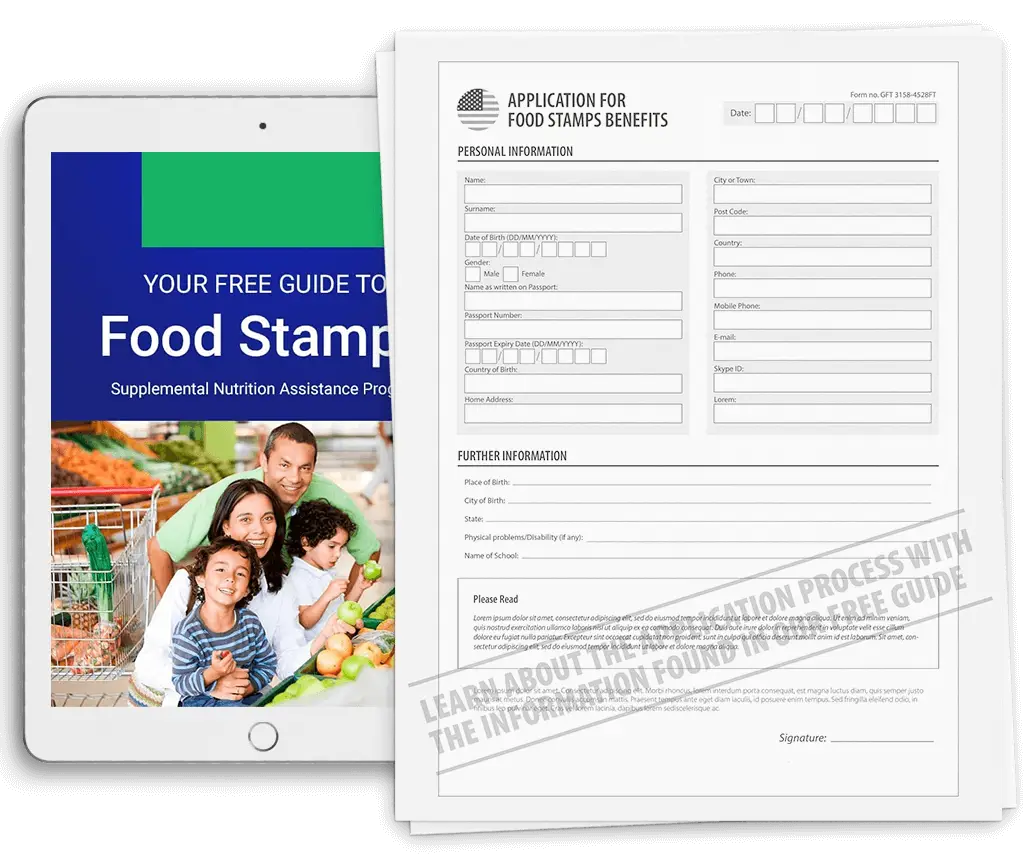New Jersey SNAP food benefits, referred to interchangeably as food stamps, are issued to low-income residents who meet all program qualifications. The food stamps benefits program was designed to offer financial assistance to families who need it so they can provide substantial and healthy at-home meals throughout the month. SNAP benefits are issued when an applicant meets all program eligibility criteria and completes the application process, unless he or she qualifies for expedited benefits. Benefits for food stamps program in New Jersey are calculated by the county welfare office using the information provided in the application. An Electronic Benefit Transfer (EBT) card is sent to qualified applicants so they can access their benefits and use them on approved food items. Using the benefit card food stamp is simple, convenient and secure for beneficiaries. To find out more about approved SNAP benefit purchases, how benefits are calculated and when they are issued, review the following sections.
Learn About Food Items You Can Purchase With SNAP in New Jersey
NJ food stamp SNAP benefits can be used to purchase food items that will contribute to the health and well-being of the applicant and his or her family members. Food stamp program beneficiaries are encouraged to consider making nutritious purchases so they can maintain a healthy lifestyle, avoid diseases and medical conditions and experience a higher energy levels and happier moods. The New Jersey food stamp program benefits are meant to be spent on food items that are used to cook nutrient-dense meals for the home. However, most food items are acceptable for purchase with SNAP benefits, so cakes, cookies, soft drinks and potato chips can still be bought using benefits, but are strongly discouraged. Acceptable food items for purchase with SNAP program benefits include:
- Fruits and vegetables
- Breads, grains and nuts
- Meats, poultry and fish
- Cheeses, yogurts, milks and other dairy products
Food stamps benefits can also be used to purchase seeds and plants if these items are intended to provide fruits, vegetables or herbs for household members to consume. Gift baskets can be purchased using food stamp benefits if they do not include alcohol or tobacco and if more than half of the items are consumable as food. Energy drinks can also be purchased with benefits if they offer a nutrition label instead of a supplement label. New Jersey food stamp benefit cards can be used at participating farmer’s markets in the state, giving beneficiaries access to local and fresh produce and ingredients.
Note: Download our guide to find out more about SNAP.
Items You Cannot Buy With New Jersey SNAP Benefits
Food stamps benefit cards cannot be used to buy all items available at authorized retailers. Many retailers may offer products or household items that are not eligible to be purchased with SNAP benefits. Some of the items that cannot be purchased with benefits include:
- Alcohol and tobacco products
- Household products, pet supplies or toiletry items
- Hot items
- Pre-prepared food items meant to be consumed on premises
- Vitamins, medicines and medications
It is illegal to use New Jersey SNAP food benefits in a liquor store, casino or adult entertainment establishment. SNAP food stamps can be taken away from program beneficiaries who attempt to make purchases in retail establishments that are off limits. Food stamp program benefits can be used to purchase live seafood for consumption, including lobster or fish. However, benefits cannot be used to purchase live animals or birds. Edible pumpkins and seasonal items can be purchased using NJ food stamps benefits, but they cannot be used to buy inedible gourds or other items for decorative purposes.
How Long Does It Take to Receive New Jersey SNAP Benefits After Enrollment?
After applying for NJ SNAP food benefits, an applicant will receive notice from the local welfare office within 30 days expressing his or her denial or approval to receive benefits. Food stamp program benefit applicants who complete all steps in the application process, including an interview and the submission of documentation, in a timely manner may receive this notice sooner. Applicants for the food stamps benefit card who are in urgent need of financial food assistance and can prove an extremely low monthly income may qualify to receive benefits within seven days of applying. After reviewing a SNAP benefit application, a welfare office representative will decide if the applicant is eligible for expedited benefits. Recipients of emergency New Jersey SNAP benefits are still responsible for completing all steps in the application process at a later time.
New Jersey EBT Card Overview
When New Jersey food stamps benefits are approved for a program applicant, he or she will receive a Families First EBT card in the mail, along with instructions for setting up and using the card. Food stamp SNAP program benefits are deposited into the beneficiary’s account each month he or she is eligible for the program and the benefits can be accessed using the SNAP benefits card. The card works like a bank card, allowing the beneficiary to use an authorized retailer’s point of sale credit card machine to complete the purchase of approved food items. When utilizing benefits for food stamps program to purchase items, the beneficiary will need to enter his or her Personal Identification Number (PIN) for security reasons. The EBT food stamps card balance and transactions can be maintained using a simple online system.
Learn About New Jersey SNAP Benefit Amounts
When calculating the amount of New Jersey benefits for food stamps program an approved applicant will receive, the welfare office representative considers the household income, expenses and members. SNAP food stamps benefits are calculated using the information given on the application and the amount of benefits awarded to each applicant may vary based on statements provided. More NJ SNAP benefits will be awarded to a household with many members, low income and high expenses. Food stamps program benefits will be less for a family with fewer members, a higher income and fewer expenses.
